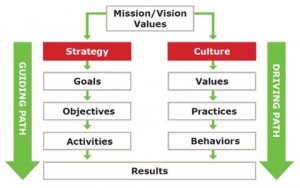 I have learned much as the acting Executive Director of my IT organization for the last seven months. While I’ve held management positions for over a decade, I have learned more about organizational change dynamics and leadership/management because of the significant scope/depth of the responsibilities and the challenges of the position.
I have learned much as the acting Executive Director of my IT organization for the last seven months. While I’ve held management positions for over a decade, I have learned more about organizational change dynamics and leadership/management because of the significant scope/depth of the responsibilities and the challenges of the position.
One of the lessons I’ve learned is that to be an effective organizational leader, you need to be an effective manager and to be an effective manager, you need to be an effective leader. In short, leadership and management go hand in hand when delivering results. I’ve seen quotes on the web that go something like this: “Culture eats strategy for breakfast/lunch” or some variation of that as if one is more important than the other. I get the sentiment that an organization can implement strategies and processes all day, but it won’t work without a culture supporting these strategies. One thing I’ve learned, though, is that, ultimately, what people want from their leaders/managers are results. As a few staff members reminded me after our initial department retreat soon after I took on this position, I can talk all I want, but the only way I can prove my merit and effectiveness is by following through and delivering on what I/we had intended to accomplish. I spoke with a colleague who said, “Joe, you’re doing a great job setting the culture of collaboration and transparency, but we need you to provide a clearer strategy towards what you want us to accomplish as a department.” That conversation reminded me that as a leader, I need to influence and shape the organization’s culture while providing a sense of direction and clear direction for folks to follow, especially when going to an unfamiliar place.
A mentor once said, “Manage constraints and lead toward possibilities,” I also read somewhere that “you manage things, and you lead people.” I’ve led enough projects to understand that scope, time, and cost are variables that must be managed when delivering projects. These are all constraints that need to be managed. But I’ve seen too often when project managers treat people as merely project resources and sometimes like factory robots just expected to follow orders. Any effective project manager would recognize the need to treat people as more than units of resources but as human beings whose motivations and personal satisfaction cannot be ignored. Treat people as robots, and they will give you the bare minimum. Treat them with respect and as human beings, and you’ll get more productivity out of them. That’s from personal experience, anyway.
The credibility of an organization’s leader is based on the consistency between their actions and words and their ability to deliver results. Delivering results requires the skills to manage constraints and leadership competencies to get the maximum effort out of people toward achieving intended goals.As the acting Executive Director for my IT organization for the last 7 months, I have learned a lot. While I’ve held management positions for over a decade, I have learned more in this position when it comes to organizational change dynamics and leadership/management because of the significant scope/depth of the responsibilities and the challenges of the position.
One of the lessons I’ve learned is that to be an effective organizational leader, you need to be an effective manager, and to be an effective manager, you need to be an effective leader. In short, leadership and management go hand in hand when delivering results. I’ve seen quotes on the web that goes something like this “culture eats strategy for breakfast/lunch” or some variation of that as if one is more important than the other. I get the sentiment that an organization can implement strategies and processes all day long, but it won’t work without a culture that supports these strategies. One thing I’ve learned, though, is that ultimately, what people want from their leaders/managers are results. As a few staff members reminded me after our initial department retreat soon after I took on this position, I can talk all I want, but the only way I can prove my merit and effectiveness is by following through and delivering on what I/we had intended to accomplish. I spoke with a colleague who said, “Joe, you’re doing a great job setting the culture of collaboration and transparency, but we need you to provide a clearer strategy towards the things you want us to accomplish as a department.” That conversation reminded me that as a leader, I need to influence and shape the organization’s culture and, at the same time, provide a sense of direction, and clear direction for folks to follow, especially when going to an unfamiliar place.
A mentor of mine once said, “manage constraints and lead towards possibilities,” I also read somewhere that “you manage things and you lead people.” I’ve led enough projects to understand that scope, time, and cost are variables that must be managed when delivering projects. These are all constraints that need to be managed. But I’ve seen too often when project managers treat people as merely project resources and sometimes like factory robots just expected to follow orders. Any effective project manager would recognize the need to treat people as more than units of resources but as human beings whose motivations and personal satisfaction cannot be ignored. Treat people as robots, and they will give you the bare minimum, treat them with respect and as human beings, and you’ll get more productivity out of them. That’s from personal experience anyway.
The credibility of an organization’s leader is based on the consistency between their actions and words and their ability to deliver results. To be able to deliver results requires the skills to manage constraints and leadership competencies to get the maximum effort out of people towards achieving intended goals.
image credit: http://www.torbenrick.eu/blog/strategy/the-importance-of-organizational-alignment/
